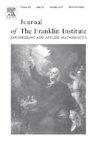霍乱模型将宿主内和宿主间与年龄依赖性和无症状感染耦合在一起
IF 3.7
3区 计算机科学
Q2 AUTOMATION & CONTROL SYSTEMS
Journal of The Franklin Institute-engineering and Applied Mathematics
Pub Date : 2024-09-22
DOI:10.1016/j.jfranklin.2024.107283
引用次数: 0
摘要
本文提出了一个耦合霍乱流行模型,其中病原体既可以在宿主内传播,也可以在宿主间传播,同时,无症状和有症状的感染者之间存在年龄依赖性感染。对于快时间子系统,无感染均衡和流行均衡都是全局渐近稳定的。通过数值模拟,我们发现年龄依赖性和无症状感染可能会进一步促进霍乱的传播。此外,个体层面的病原体传播与群体层面的感染之间的联系可能会导致向前或向后分叉。本文章由计算机程序翻译,如有差异,请以英文原文为准。
A cholera model coupling within-host and between-host with age-dependent and asymptomatic infections
In this paper, a coupling cholera epidemic model is proposed, in which the pathogens could both spread within-host and between-host, meanwhile, there exist age-dependent infection between the asymptomatic and symptomatic infected people. For the fast-time subsystem, the infection-free and endemic equilibria are both globally asymptotically stable. For the slow-time subsystem, the basic reproduction number is determined, by which we observe that the disease-free equilibrium is globally asymptotically stable (the absence of pathogens in environment) if , while the endemic equilibrium is globally asymptotically stable (the presence of pathogens in environment) when . The theoretical results are illustrated by numerical simulations, by which we find that age-dependent and asymptomatic infections may further promote cholera spread. Besides, the linking of pathogen transmission at the individual level with infection at the population level could result in forward or backward bifurcation.
求助全文
通过发布文献求助,成功后即可免费获取论文全文。
去求助
来源期刊
CiteScore
7.30
自引率
14.60%
发文量
586
审稿时长
6.9 months
期刊介绍:
The Journal of The Franklin Institute has an established reputation for publishing high-quality papers in the field of engineering and applied mathematics. Its current focus is on control systems, complex networks and dynamic systems, signal processing and communications and their applications. All submitted papers are peer-reviewed. The Journal will publish original research papers and research review papers of substance. Papers and special focus issues are judged upon possible lasting value, which has been and continues to be the strength of the Journal of The Franklin Institute.

 求助内容:
求助内容: 应助结果提醒方式:
应助结果提醒方式:


